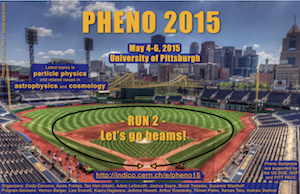Speaker
Shanmuka Shivashankara
(University of Mississippi)
Description
At present, there are several hints of lepton flavor non-universality. The LHCb Collaboration has measured $R_K$≡$B(B^+→K^+μ^+μ^−)/B(B^+→K^+e^+e^−)$, and the BaBar Collaboration has measured $R(D^{(∗)})$≡$B(\bar{B}→D^{(∗)+}τ^−\bar{ν}_τ)/B(\bar{B}→D^{(∗)+}ℓ^−\bar{ν}_ℓ)$ $(ℓ=e,μ)$. In all cases, the experimental results differ from the standard model predictions by 2-3$σ$. Recently, an explanation of the $R_K$ puzzle was proposed in which new physics (NP) generates a neutral-current operator involving only third-generation particles. Now, assuming the scale of NP is much larger than the weak scale, this NP operator must be made invariant under the full $SU(3)_C×SU(2)_L×U(1)_Y$ gauge group. In this Letter, we note that, when this is done, a new charged-current operator can appear, and this can explain the $R(D^{(∗)})$ puzzle. A more precise measurement of the double ratio $R(D)/R(D^{(∗)})$ can rule out this model.
Author
Bhubanjyoti Bhattacharya
(Universite de Montreal)
Co-authors
Alakabha Datta
(University of Mississippi)
David London
(Universite de Montreal)
Shanmuka Shivashankara
(University of Mississippi)
